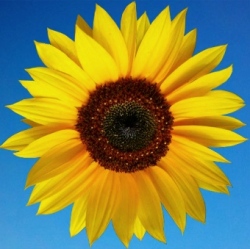
The job of pollen is to seed the next generation of plants, but a new study shows that the grains might also seed clouds. The unexpected findings demonstrate that these wind-carried capsules of genetic material might have an effect on the planet’s climate. And they highlight a new link between plants and the atmosphere.
Pollen has been largely ignored by atmospheric scientists who study aerosols, particles suspended in the air that scatter light and heat and play a role in cloud formation. "The grains were thought to be too large to be important in the climate system, too large to form clouds or interact with the sun’s radiation," said Allison Steiner, U-M associate professor of atmospheric, oceanic and space sciences. "And also the large particles don’t last in the atmosphere. They tend to settle out relatively quickly."
But Steiner and her colleagues weren’t sure that was the whole story. Sweeping a dusting off her porch one spring morning, she wondered what happens to the grains in the air. Steiner turned to the medical community. Pollen causes seasonal allergies, which affect between 10 and 20 percent of U.S. residents.
"When we were looking in the allergy literature we discovered that it’s pretty well known that pollen can break up into these tiny pieces and trigger an allergic response," Steiner said. Smaller grains could have big implications. The research team set out to see if moisture could cause the pieces to break down.
"What we found is when pollen gets wet, it can rupture very easily in seconds or minutes and make lots of smaller particles that can act as cloud condensation nuclei, or collectors for water," Steiner said.
